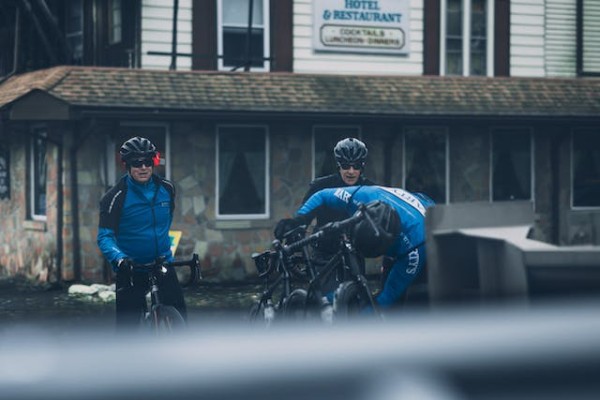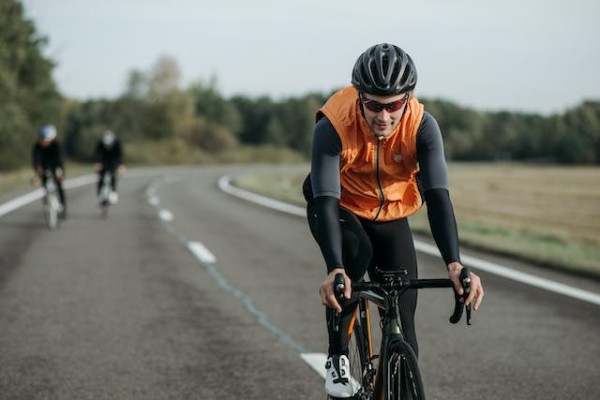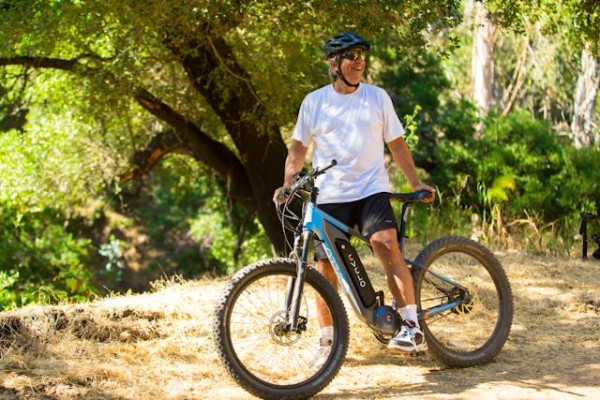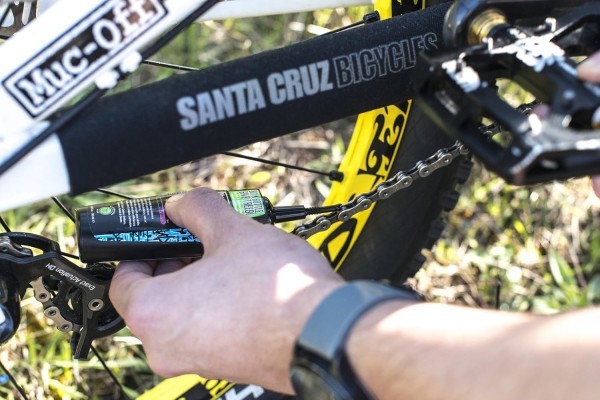So, you’ve just embarked on a long bike ride, feeling the wind in your hair and the burn in your legs. You’ve conquered those steep hills, cycled through picturesque landscapes, and pushed yourself to the limit. But now, my dear rider comes the time to face the aftermath. How long will it take for your body to recover from this epic adventure?
Ah, the joy of recovery! It’s like a sweet symphony playing in your muscles, a dance of healing and rejuvenation. But let’s not get ahead of ourselves. Recovery time can vary depending on several factors, such as your fitness level, the intensity of the ride, and how well you take care of yourself afterward.
Rest and sleep, my friend, are your best friends in this recovery journey. They are the magic potions that help your body rebuild and repair. But that’s not all – proper nutrition plays a vital role too. Fueling your body with the right nutrients and staying hydrated will speed up your recovery process.
But wait, there’s more! Active recovery techniques, like gentle stretching and low-intensity exercise, can also aid in your quest for a speedy recovery. And let’s not forget about building strength and endurance, which can help you bounce back even faster.
So, my fellow adventurer, strap on your helmet and get ready to explore the world on two wheels. Just remember, recovery is part of the journey too, and with the right approach, you’ll be back in the saddle, ready for your next epic ride in no time.
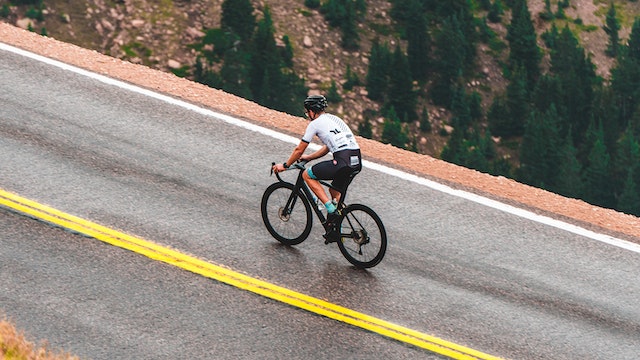
1. Factors Affecting Recovery Time
You’ll be amazed at how different factors can impact your recovery time after a long bike ride. It’s not just about the distance you covered or the intensity of your ride, but also about the choices you make before, during, and after your ride.
One factor that can affect your recovery time is your nutrition. Eating a balanced meal before your ride can provide you with the energy you need and help your muscles recover faster. During your ride, staying hydrated and fueling your body with snacks can also make a difference in how quickly you bounce back.
Another factor to consider is your level of fitness. If you’re regularly active and have a strong cardiovascular system, your recovery time may be shorter compared to someone who is less fit.
Additionally, how well you take care of your body after your ride is crucial. Stretching, foam rolling, and getting enough rest can all contribute to a faster recovery.
So, if you want to minimize your recovery time after a long bike ride, pay attention to these factors and give your body the care it deserves.
2. Importance of Rest and Sleep
After a challenging bike journey, it’s crucial to prioritize rest and sleep to ensure optimal recovery. Your body needs time to repair and rebuild the muscles that were pushed to their limits during the ride.
Rest and sleep are essential for your body to heal and rejuvenate, allowing you to bounce back stronger than ever. During sleep, your body releases growth hormones that aid in muscle repair and recovery. Without adequate sleep, these hormones may not be produced in sufficient quantities, leading to slower recovery times.
Additionally, rest and sleep help regulate your immune system, allowing it to fight off any potential illnesses or infections that may arise from the physical stress of a long bike ride.
Aside from physical recovery, rest and sleep also play a crucial role in your mental well-being. Fatigue and lack of sleep can affect your mood and cognitive function, making it difficult to focus and perform at your best.
By prioritizing rest and sleep, you can ensure that your mind is sharp and ready to tackle any challenges that come your way. Remember, recovery is not just about how quickly your body heals; it’s also about creating a sense of balance and harmony within yourself.
Take the time to rest, relax, and recharge. Your body and mind will thank you, and you’ll be ready for your next thrilling bike adventure in no time.
3. Proper Nutrition for Recovery
Fueling your body with a balanced and nutrient-rich diet is like giving it the tools it needs to rebuild and recharge after an intense cycling adventure. Proper nutrition is essential for recovery and can significantly impact your post-ride experience.
Here are four key elements to include in your diet to optimize your recovery:
- Hydration: Drink plenty of water to replenish the fluids lost during the ride. Staying hydrated helps prevent muscle cramps and fatigue, keeping you energized and ready for your next adventure.
- Protein: Include lean sources of protein like chicken, fish, or tofu in your meals. Protein helps repair and rebuild muscles, promoting faster recovery and reducing muscle soreness.
- Carbohydrates: Choose complex carbohydrates such as whole grains, fruits, and vegetables. These provide a steady release of energy, replenishing glycogen stores and promoting muscle recovery.
- Antioxidants: Incorporate foods rich in antioxidants like berries, spinach, and nuts. Antioxidants help reduce inflammation and oxidative stress, enhancing your body’s recovery process.
By nourishing your body with these essential nutrients, you provide it with the necessary tools to recover effectively and feel your best. Remember, proper nutrition is key to feeling a sense of belonging to the cycling community and achieving your goals on the bike.
4. Active Recovery Techniques
To enhance your post-ride experience and fully enjoy the benefits of recovery, try incorporating active recovery techniques into your routine. These techniques can help relieve muscle soreness, reduce fatigue, and promote a sense of well-being. By engaging in light physical activity after a long bike ride, you can stimulate blood flow, flush out toxins, and enhance your body’s natural recovery process.
One effective active recovery technique is foam rolling. Using a foam roller, you can target specific muscle groups and apply pressure to release tension and knots. This self-massage technique can help increase flexibility and range of motion, allowing you to recover faster and prevent injuries.
Another beneficial technique is gentle stretching. After a long bike ride, your muscles may be tight and contracted. By performing dynamic stretches that involve gentle movement, you can improve circulation and promote muscle relaxation. Stretching also helps prevent muscle imbalances and improves overall flexibility.
Lastly, consider incorporating low-impact activities into your recovery routine, such as walking or swimming. These activities provide a gentle way to keep your body moving without putting excessive stress on your muscles and joints. They can help improve circulation, reduce inflammation, and enhance your overall recovery.
By incorporating these active recovery techniques into your post-ride routine, you can promote faster recovery, reduce muscle soreness, and enhance your overall well-being. Remember, recovery is just as important as the ride itself, so take the time to prioritize your body’s needs. You deserve to feel your best and belong to the community of passionate cyclists who understand the importance of recovery.
| Active Recovery Techniques | ||
|---|---|---|
| Foam Rolling | Gentle Stretching | Low-Impact Activities |
| Relieves muscle soreness | Improves flexibility | Promotes gentle movement |
| Flushes out toxins | Enhances circulation | Reduces stress on muscles and joints |
| Enhances recovery process | Promotes muscle relaxation | Reduces inflammation |
| Prevents injuries | Improves overall flexibility | Promotes overall well-being |
5. Building Strength and Endurance for Faster Recovery
Improve your post-ride recovery by building strength and endurance, allowing you to bounce back quicker and hit the road again with renewed energy and vitality. Building strength and endurance not only helps you perform better on long bike rides but also aids in your recovery process.
When you have a solid foundation of strength and endurance, your body becomes more resilient and better equipped to handle the physical demands of cycling.
To build strength, incorporate resistance training exercises into your routine. Focus on exercises that target your lower body, such as squats, lunges, and leg presses. Strengthening your core muscles, like your abs and back, will also enhance your stability while biking. Additionally, include upper body exercises like push-ups and rows to improve overall strength.
Endurance can be developed through consistent cardiovascular training. Engage in activities like cycling, swimming, or running to build your endurance levels. Gradually increase the duration and intensity of your workouts to challenge your body and push your limits.
Remember to allow for proper rest and recovery between training sessions. This includes getting enough sleep, fueling your body with nutritious foods, and practicing active recovery techniques like stretching and foam rolling.
By focusing on building strength and endurance, you will not only recover faster from your long bike rides but also become a stronger and more capable cyclist. Embrace the journey, connect with fellow riders, and enjoy the sense of belonging that comes with being a part of the cycling community.
Frequently Asked Questions
What are some common mistakes that can prolong recovery time after a long bike ride?
To avoid prolonging recovery time after a long bike ride, be mindful of common mistakes. These include not properly hydrating, neglecting to stretch, overexerting yourself, and failing to refuel with nutritious food.
Are there any specific stretches or exercises that can help speed up recovery after a long bike ride?
To speed up recovery after a long bike ride, try incorporating stretches like quad stretches and hamstring stretches, as well as exercises like foam rolling and light cycling. These can help alleviate muscle soreness and improve blood flow.
Can taking supplements or using recovery products help expedite the recovery process after a long bike ride?
To expedite your recovery after a long bike ride, consider taking supplements or using specific recovery products. These can help replenish nutrients, reduce inflammation, and promote muscle repair, allowing you to bounce back faster and feel a sense of belonging in your cycling community.
How long should I wait before participating in another long bike ride after recovering from a previous one?
Wait until you feel fully rested and ready to go before participating in another long bike ride. Listen to your body and give yourself enough time to recover to prevent injury and enjoy the ride.
Are there any specific techniques or strategies for mental recovery after a long bike ride?
To mentally recover from a long bike ride, try implementing relaxation techniques like deep breathing or meditation. Engage in activities that bring you joy and help you feel connected to others, fostering a sense of belonging.
Conclusion
Remember, rest and sleep are crucial in allowing your body to heal and recharge. Fueling your body with proper nutrition will also speed up the recovery process. And don’t forget to incorporate active recovery techniques into your routine to help your muscles recover faster.
By building strength and endurance, you’ll be able to bounce back from those long bike rides in no time. As the saying goes, “Time heals all wounds,” and with the right recovery strategies, you’ll be back in the saddle before you know it.
